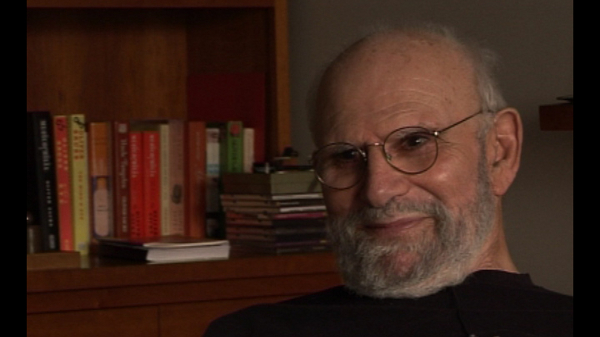NEXT STORY

Positive reviews for Migraine
RELATED STORIES

NEXT STORY

Positive reviews for Migraine
RELATED STORIES


|
Views | Duration | |
|---|---|---|---|
| 121. The blissful feeling having written Migraine | 308 | 01:11 | |
| 122. Wanting to publish addendums to Migraine | 276 | 02:11 | |
| 123. The publishing of Migraine | 283 | 02:20 | |
| 124. Starting to see the Awakenings patients | 331 | 00:46 | |
| 125. The use of L-DOPA in the Awakenings patients | 483 | 01:46 | |
| 126. Positive reviews for Migraine | 271 | 01:26 | |
| 127. Drafting books on 'tics', sub-cortical functions and... | 1 | 259 | 01:28 |
| 128. Responding to Luria's work on higher cortical functions | 278 | 01:03 | |
| 129. Letters to the editors of 'The Lancet' and 'JAMA' | 257 | 04:07 | |
| 130. Encouragement from James Purdon Martin | 328 | 00:56 |


I had to apply for a special license from the Drug Enforcement Administration to use L-DOPA which was considered an experimental drug. I had to pledge myself to do a double-blind study and keep notes of the sort they insisted on. I reneged on both of these. First, when I gave L-DOPA in March of '69 to three patients, and a placebo to three other patients. It was evident that the placebo was doing nothing, but the L-DOPA was doing everything. These were people who had been almost inanimate for 30 or 40 years, who had burst into explosive life. At that point I thought there's... it would be wrong, ridiculous and wrong and unethical, to withhold L-DOPA from anyone, so I made it available for all of the people. Also what was going on was so complex in both neurological and human terms, that the silly little inventories which the FDA wanted seemed to me ridiculous. I thought one had to have full, sort of, biographic notes. I kept very detailed notes and journals, and some of the patients did. I also at that time started camera... carrying around a camera because I thought these are things which have never been seen before, and may never be seen again...must have a visual record as well.
Oliver Sacks (1933-2015) was born in England. Having obtained his medical degree at Oxford University, he moved to the USA. There he worked as a consultant neurologist at Beth Abraham Hospital where in 1966, he encountered a group of survivors of the global sleepy sickness of 1916-1927. Sacks treated these patients with the then-experimental drug L-Dopa producing astounding results which he described in his book Awakenings. Further cases of neurological disorders were described by Sacks with exceptional sympathy in another major book entitled The Man Who Mistook His Wife For A Hat which became an instant best seller on its publication in 1985. His other books drew on his rich experiences as a neurologist gleaned over almost five decades of professional practice. Sacks's work was recognized by prestigious institutions which awarded him numerous honours and prizes. These included the Lewis Thomas Prize given by Rockefeller University, which recognizes the scientist as poet. He was an honorary fellow of both the American Academy of Arts and Letters and the American Academy of Arts and Sciences, and held honorary degrees from many universities, including Oxford, the Karolinska Institute, Georgetown, Bard, Gallaudet, Tufts, and the Catholic University of Peru.
Title: The use of L-DOPA in the "Awakenings" patients
Listeners: Kate Edgar
Kate Edgar, previously Managing Editor at the Summit Books division of Simon and Schuster, began working with Oliver Sacks in 1983. She has served as editor and researcher on all of his books, and has been closely involved with various films and adaptations based on his work. As friend, assistant, and collaborator, she has accompanied Dr Sacks on many adventures around the world, clinical and otherwise.
Tags: L-Dopa, experiment, placebo, double blind, camera
Duration: 1 minute, 46 seconds
Date story recorded: September 2011
Date story went live: 02 October 2012